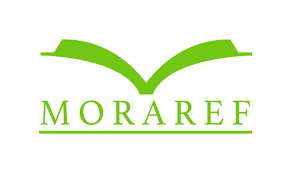Download
Author Guidlines
Format:
The systematics of writing articles include: Title, Authors, Abstract Introduction, Literature Review, Research Methods, Research Results and Discussion, Conclusions, Acknowledgements (if you have it) and Bibliography.
- Articles are typed in Book Antiqua font size 12 points with two lines, 1.15 spacing on A4 paper;
- The upper, lower, left and right margins are at least 2.5 cm;
- Articles are written as efficiently as possible, with an article length of around 10 pages;
- All pages, including references and attachments must be numbered sequentially;
- Authors must use the Mendeley application in writing citations and bibliographies;
- Manuscripts must follow the Bioshell Journal manuscript writing template. Templates for authors can be downloaded in the available place;
- Article Writing Systematics.
Title:
Written in Indonesian or English consisting of a maximum of 15 words, spaced 1, size 14 points, capital letters.
Authors:
Consists of 1 person or several people, by writing the name, affiliation and email address.
Abstract:
The abstract in Indonesian and English is written with left-right alignment, below the author information, with one space and one column. The word "Abstract" as the title is written in 10-point Book antiqua font, bold, centered, with all letters capitalized. The abstract text is written in 10-point Book antiqua font, single spaced, up to approximately 250 words. After the Indonesian abstract, write the keywords of the paper in a list of keywords, consisting of three to five words starting from the most common and important in the content of the article. Then continue with the English abstract.
Introduction:
Includes a literature review and contains elements of background, problems/problem formulation, objectives and benefits of the research, hypotheses if there is any can be included, and research design. The introduction is written in 12-point Book Antiqua font, bold, all first letters are written in capital letters.
Research Methods:
Includes the location and time of the research, the nature of the research (objectives, approaches, scope of data sources), data collection techniques and data analysis methods. The methodology also includes an explanation based on scientific characteristics (rational, empirical and systematic) with the target of the latest research results, materials and equipment and methods used (including analysis tools), descriptions of the procedures carried out, descriptions of mathematical formulations and detailed explanations of the methods.
Results and Discussion:
Contains the following descriptions:
- Display in the form of tabulation of research data results carried out in accordance with the methods and variables used;
- Analysis and evaluation of the data in accordance with the formula for the results of the theoretical study carried out;
- To be clearer, the discussion of the results of the analysis and evaluation can apply comparative methods, the use of equations, graphs, images and tables;
- Interpretation of the results of the analysis to obtain answers, added value and benefits are associated with the problems and objectives of the research;
- The results must answer the problems and objectives of the research;
- The discussion is written concisely and focuses on the interpretation of the results obtained and is not a repetition of the results section.
Conclusion:
The final result of the writing obtained from the results of the analysis and discussion or the results of the hypothesis test on the phenomenon being studied. The conclusion is not a rewrite of the discussion and also not a summary, but rather a brief presentation in the form of complete sentences or in the form of sequential conclusion points. The conclusion must answer the research questions and problems. The consistency triangle is important to fulfill (problem - objective - conclusion) as an effort to check and recheck.
Acknowledgements:
Acknowledgements are given to people who contributed to the research, and not members of the research team.
Bibliography:
Contains sources referred to in writing the article.
Tables and Figures (Graphs):
- Tables and figures are presented as efficiently as possible (only those presenting results) and included in the manuscript. Tables are equipped with numbering placed above the table, while figures are equipped with numbering placed below the figure;
- Tables and figures are given sequential numbers and full titles that show the contents of the table or figure;
- References to tables or figures must be given in the manuscript;
- The author mentions in the section in the manuscript, where the table or figure is included;
- Tables or figures should be interpretable without having to refer to the manuscript;
- Sources of Tables and Figures must be included;
- Figures must be prepared in a printable form.
Plagiarism Policy:
Every author who submits an article to the Bioshell Journal must include that the manuscript is free from plagiarism by sending proof of plagiarism check results, maximum 20%. And the submitted article is not being considered and published in another journal.
Article Submission:
Articles are sent directly by registering in the Bioshell Journal, at the website address http://ejurnal.uij.ac.id/index.php/BIO and will be processed using the Open Journal System (OJS) application.
Author Contribution:
Submit articles without any charge (Free). If the article has passed the Review stage and is declared accepted, the Author will be charged Rp. 400,000, -












